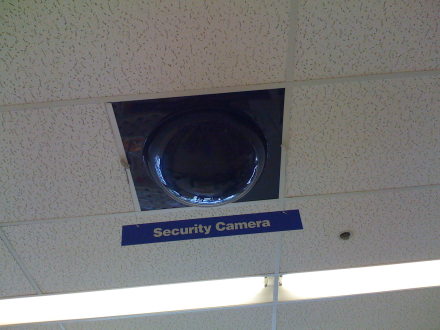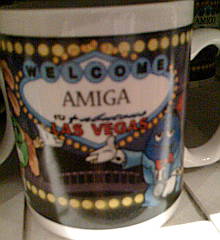Feed in Rogue Signal Here

Sometimes it makes sense to label a surveillance camera.
The Easiest Way to Reset an i386/x86_64 System
Try this in kernel mode:
LodgeNet Reverse Engineering

Many hotels (at least in the USA) equip their room TVs with a “LodgeNet” entertainment system. The TV will show regular free television channels, but also have an interactive channel controlled by the remote that features video on demand and video games.
cbmbasic 1.0 with Plugins
I moved cbmbasic development to SourceForge and released version 1.0, which has the following added features:
Amiga/Lorraine Mugs

Every touristy place has them: Souvenirs with given names on them. If you have an uncommon name, or a friend with an uncommon name, you might look through the whole collection – and notice that they have generic ones like “#1 FRIEND” (i case you really don’t find your friend’s name), and, sometimes, generic ones in Spanish.
Commodore BASIC as a Scripting Language for UNIX and Windows – now Open Source
Update: The source is available at github.com/mist64/cbmbasic
Create your own Version of Microsoft BASIC for 6502
Update: The source is available at github.com/mist64/msbasic
Building the Solaris Kernel in 73 Easy Steps
Everyone and their grandmother builds Linux kernels. Many people build BSD, and some brave men even compile the OS X kernel every now and then. Why not compile your own Solaris kernel for a change?
The Xbox 360 Security System and its Weaknesses
After the disaster of the original Xbox, Microsoft put a lot of effort in designing what is probably the most sophisticated consumer hardware security system to date. We present its design, its implementation, its weaknesses, how it was hacked, and how to do it better next time.
1200 Baud Archeology: Reconstructing Apple I BASIC from a Cassette Tape

The audio file that was posted two weeks ago is indeed a very important artifact of computer history: It is a recording of the “Apple I BASIC” cassette tape that came with the Apple I. It is the first piece of Software ever sold by Apple (not counting computer firmware).